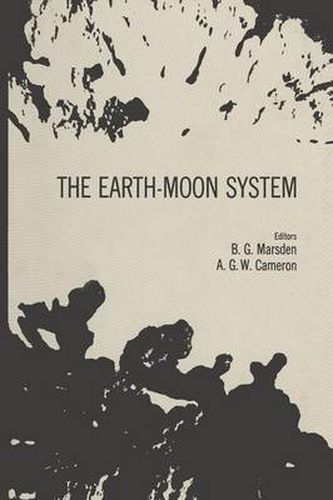Readings Newsletter
Become a Readings Member to make your shopping experience even easier.
Sign in or sign up for free!
You’re not far away from qualifying for FREE standard shipping within Australia
You’ve qualified for FREE standard shipping within Australia
The cart is loading…






This title is printed to order. This book may have been self-published. If so, we cannot guarantee the quality of the content. In the main most books will have gone through the editing process however some may not. We therefore suggest that you be aware of this before ordering this book. If in doubt check either the author or publisher’s details as we are unable to accept any returns unless they are faulty. Please contact us if you have any questions.
On January 20-21, 1964, the Institute for Space Studies of the Goddard Space Flight Center, National Aeronautics and Space Administration, was host to an international group of astronomers, physicists, and Earth scientists, gathered to discuss the Earth-Moon system. This was the sixth in a continuing series of interdisciplinary meetings on topics in space physics held at the Institute. The conference was organ ized by G.J.F. MacDonald, of the University of California at Los Angeles, and by R.H. Dicke, of Princeton University. The working title of the conference was The Dynamics of the Earth-Moon System, and indeed much of the contents of this proceedings volume is concerned with dynamical problems, but the conference dealt with many other topics concerning the Earth-Moon system, and hence we have adopted the shorter title for this volume. The conference proceedings have been somewhat rear** ranged from the order in which the papers were actually presented. In doing this the editors are exercising hindsight to bring together closely related discussions. The first paper, by D. Brouwer, discusses the motions and moments of inertia of the Moon and their relation to the lunar figure and composition. From this discussion it emerges there remain many uncertainties in the motion of the Moon associated with the lunar composition and the distribution of its mass.
$9.00 standard shipping within Australia
FREE standard shipping within Australia for orders over $100.00
Express & International shipping calculated at checkout
This title is printed to order. This book may have been self-published. If so, we cannot guarantee the quality of the content. In the main most books will have gone through the editing process however some may not. We therefore suggest that you be aware of this before ordering this book. If in doubt check either the author or publisher’s details as we are unable to accept any returns unless they are faulty. Please contact us if you have any questions.
On January 20-21, 1964, the Institute for Space Studies of the Goddard Space Flight Center, National Aeronautics and Space Administration, was host to an international group of astronomers, physicists, and Earth scientists, gathered to discuss the Earth-Moon system. This was the sixth in a continuing series of interdisciplinary meetings on topics in space physics held at the Institute. The conference was organ ized by G.J.F. MacDonald, of the University of California at Los Angeles, and by R.H. Dicke, of Princeton University. The working title of the conference was The Dynamics of the Earth-Moon System, and indeed much of the contents of this proceedings volume is concerned with dynamical problems, but the conference dealt with many other topics concerning the Earth-Moon system, and hence we have adopted the shorter title for this volume. The conference proceedings have been somewhat rear** ranged from the order in which the papers were actually presented. In doing this the editors are exercising hindsight to bring together closely related discussions. The first paper, by D. Brouwer, discusses the motions and moments of inertia of the Moon and their relation to the lunar figure and composition. From this discussion it emerges there remain many uncertainties in the motion of the Moon associated with the lunar composition and the distribution of its mass.